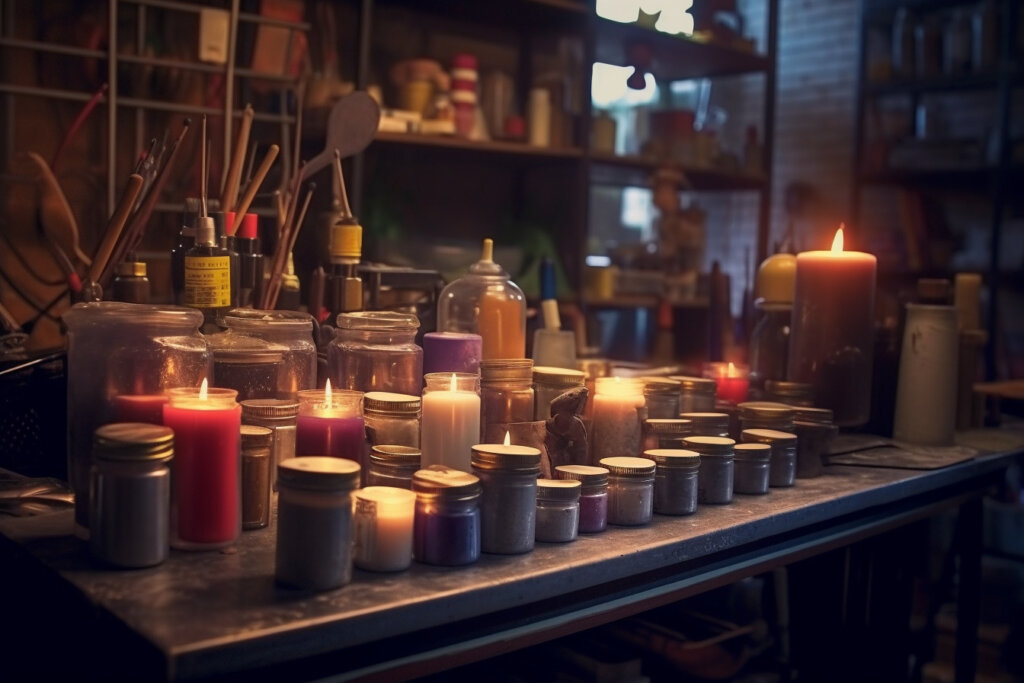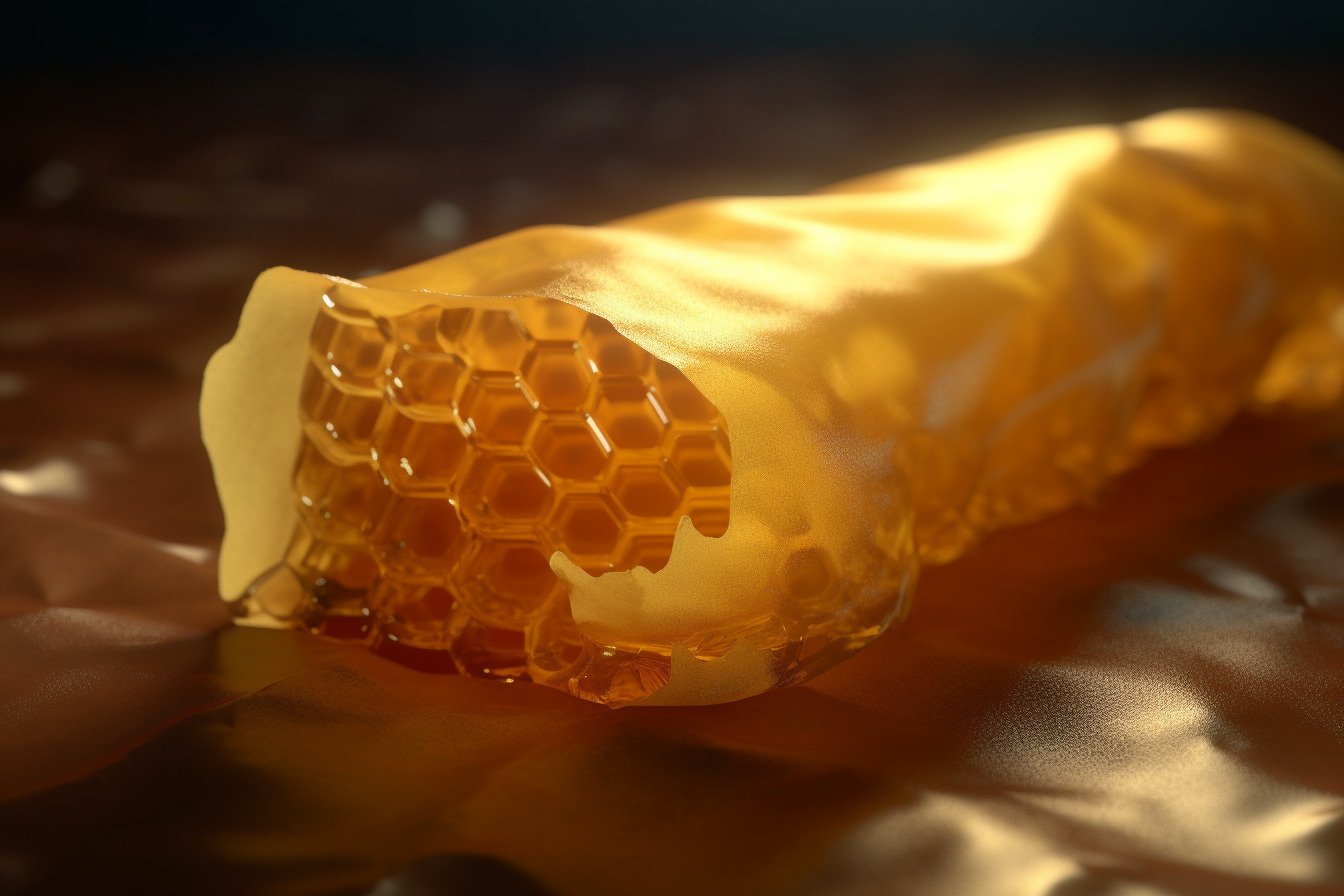A brief overview of Beeswax
Beeswax, a natural wax produced by honey bees, is a marvel of nature that has been utilized by humans for thousands of years. It is the bees’ ingenious solution to creating stable structures for honey storage and larvae protection. With its characteristic golden hue, pleasant aroma, and versatile physical properties, beeswax forms the basis of the honeycomb within a bee hive. It is a substance that has not only shaped the life of bees but has been intimately interwoven with human history and development.
Importance of beeswax in various industries
Today, beeswax is a vital ingredient in a vast array of industries. From the world of cosmetics, where it lends its emulsifying properties to lotions and lip balms, to the realm of food preservation, where it is used as a coating for cheese and a component of reusable food wraps. Its usage even extends to candle-making, crafting, and the health sector, where it is revered for its healing and soothing qualities. The significance of beeswax is far-reaching and speaks to its remarkable versatility and sustainability. Its story is a testament to how a seemingly simple substance can have such wide-ranging applications.
Historical Uses of Beeswax

Use in candle-making
Long before the advent of electricity, beeswax played a crucial role in dispelling the darkness. Its use in candle-making dates back to ancient times, and the exceptional quality of light provided by beeswax candles made them highly sought after. Unlike other materials, beeswax candles burn cleanly, without producing smoke or soot, and emit a warm, natural glow that is closer to sunlight than any artificial light could replicate.
Significance in religious rituals
Beyond practical illumination, beeswax candles hold a significant place in religious and spiritual practices. In many religions, including Christianity and Buddhism, beeswax candles have been used in rituals and ceremonies for centuries. Their pure, natural origin, combined with the sweet, subtle honey fragrance they emit when burned, has led to their association with divinity and purity. Many religious institutions today still prefer beeswax candles for their ceremonial significance and superior burning qualities.
Use in preservation and art
Beeswax has also found its place in the world of art and preservation. One notable application is in encaustic painting, a technique that involves using heated beeswax to which colored pigments are added. This method was notably used by ancient Greeks and Egyptians, allowing for the creation of vibrant and durable artworks that have stood the test of time.
Encaustic painting
Encaustic painting, or hot wax painting, involves applying heated beeswax to a surface and then adding pigments. The artist then fuses each layer of wax with heat, resulting in a rich, luminous finish that cannot be replicated by other mediums. This ancient art form, first used by Greek artists as far back as the 5th century BC, is still practiced today, testifying to the unique properties of beeswax in creating enduring and captivating works of art.
Wax seals in communication
In a world before instant messaging and email, wax seals, often made from beeswax, played a crucial role in secure and private communication. The use of beeswax seals on documents signified authenticity and intent, and the unique imprint of a seal was a personal signature that could not be easily forged. This practice was particularly prevalent in medieval times among royalty and nobility, although it is still used today for formal and ceremonial correspondence.
Use in cosmetics and medicinal practices
Beeswax has a long history in the world of cosmetics and medicine. Its natural, non-toxic, and hydrating properties made it an ideal ingredient in skincare and healing preparations.
Ancient Egyptian skincare
Historical records indicate that beeswax was a staple in ancient Egyptian beauty routines. Cleopatra herself is said to have used beeswax as part of her legendary skincare regime. Beeswax was used to create creams and lotions that moisturized the skin, protected it from the harsh desert climate, and even helped in the removal of body hair.
Traditional medicines and salves
In traditional medicine, beeswax was often used in salves and balms due to its beneficial properties. It acts as a barrier that helps to seal moisture into the skin, and it is also a natural source of Vitamin A, which promotes hydration and regeneration of the skin. Its anti-inflammatory properties have made it useful in wound healing and the treatment of skin conditions such as eczema and psoriasis. The use of beeswax in medicinal practices is a testament to its multifaceted nature and its enduring value through the centuries.
Beeswax in Modern Times

Continued use in candle-making
In the present day, beeswax continues to hold its esteemed place in candle-making. Despite the availability of cheaper alternatives, the unique properties of beeswax — its long, clean burn, natural honey scent, and smokeless flame — make it a favorite among candle connoisseurs. It’s not uncommon to see beeswax candles used in settings ranging from cozy home interiors to elegant dining establishments.
Advantages over paraffin candles
When compared to paraffin candles, beeswax offers several distinct advantages. Firstly, beeswax is a renewable resource, produced sustainably by bees, while paraffin is derived from petroleum, a non-renewable resource. Secondly, unlike paraffin candles, beeswax candles do not release toxic byproducts or soot when burned. Lastly, beeswax candles burn slower and longer, providing more hours of light per candle.
Rise of scented and specialty beeswax candles
In recent years, the candle industry has seen a rise in scented and specialty beeswax candles. These range from candles infused with essential oils to create calming or invigorating aromas, to intricately shaped candles that serve as decorative pieces. The natural aroma of beeswax pairs beautifully with a variety of scents, creating a luxurious and soothing atmosphere when burned.
Use in cosmetics and skincare
Beeswax remains an essential ingredient in the cosmetics and skincare industry. It is prized for its versatile properties that contribute to the effectiveness of a myriad of products.
Role in emulsification
One of the key roles beeswax plays in cosmetics is as an emulsifier. In lotions and creams, beeswax helps to blend water and oils together into a smooth mixture, providing the base for many skincare products. Its emulsifying property helps to ensure that the product maintains a consistent texture and does not separate over time.
Benefits for skin health
Besides its role in the formulation of skin care products, beeswax offers direct benefits for skin health. It creates a protective barrier on the skin, sealing in moisture without clogging pores. It’s also rich in vitamin A, which aids in skin hydration and regeneration. These properties make beeswax a valuable ingredient in products designed to soothe and nourish the skin.
Use in the food and beverage industry
The utility of beeswax extends into the food and beverage industry as well. From preserving cheese to creating sustainable food wraps, beeswax has found its niche in food preservation and storage.
Coating for cheese preservation
One of the traditional uses of beeswax in food preservation is as a coating for cheese. The beeswax coating effectively seals the cheese, protecting it from mold and moisture loss. This practice not only helps to preserve the quality of the cheese but also contributes to its unique flavor profile.
Component of food wraps
In a bid to reduce plastic waste, beeswax food wraps have emerged as a sustainable alternative to plastic cling film. Made by infusing a cloth with beeswax, these wraps are reusable, biodegradable, and have natural antibacterial properties. Their growing popularity attests to the role beeswax can play in supporting sustainable practices in our everyday lives.
Beeswax in Medicine and Health
Use in traditional remedies
In the world of traditional remedies, beeswax holds a significant place. Its properties have been harnessed in various cultures and across centuries to aid in the healing and soothing of various ailments.
Salves and balms
Salves and balms made with beeswax have been a staple of folk medicine for centuries. Beeswax acts as a base, carrying the medicinal properties of herbs and essential oils, while its own healing qualities contribute to the overall efficacy of these remedies. Beeswax salves are often used to soothe skin irritations, minor cuts, and burns, owing to their natural anti-inflammatory and antibacterial properties.
Lip balms and skincare products
The moisturizing properties of beeswax make it an ideal ingredient in lip balms and skincare products. Lip balms with beeswax provide a protective layer on the skin that shields lips from environmental stressors, while still allowing the skin to breathe. Additionally, skincare products with beeswax deliver hydration and protection, helping to soothe and repair dry or damaged skin.
Emerging uses in modern medicine
As science progresses, the applications of beeswax in modern medicine are becoming increasingly apparent. Its natural, non-toxic, and biocompatible properties make beeswax a promising material in several medical fields.
Dental practices
In dental practices, beeswax has found a variety of uses. It’s used in the creation of dental wax, which is often recommended to reduce discomfort caused by braces or other orthodontic appliances. Furthermore, beeswax is also used in dental impression materials due to its malleability and non-toxic nature.
Wound and burn treatment
Emerging research is showing promising results for the use of beeswax in wound and burn treatment. Beeswax, when used in dressings, can provide a moisture-resistant barrier that protects the wound while maintaining a conducive environment for healing. Its natural anti-inflammatory and antibacterial properties may also aid in the healing process. While more research is needed, these findings signal a potential future where beeswax plays an even greater role in health and medicine.
Beeswax and Sustainability
Eco-friendly properties of beeswax
Beeswax, by its very nature, is an eco-friendly substance. It is a renewable resource, produced by bees as a byproduct of their essential role in pollination. Unlike many synthetic materials, beeswax production has a minimal environmental impact, making it an ideal choice for sustainable manufacturing.
Biodegradable nature
A key aspect of beeswax’s environmental friendliness is its biodegradability. When a beeswax product has served its purpose, it will naturally decompose over time, returning its components back to the environment without leaving harmful residues. This biodegradable nature reduces the impact of landfill waste, contributing to a healthier planet.
Non-toxic characteristics
Beeswax is a non-toxic substance, safe for both humans and the environment. It does not release harmful chemicals or pollutants when used, making it a preferable choice for many applications, especially those involving direct contact with the human body or food products.
Role in promoting bee populations
The demand for beeswax indirectly helps promote healthy bee populations. Beekeeping for wax and honey production provides an incentive for the preservation of bees, whose numbers have been under threat in recent years. Bees play a crucial role in pollinating plants, including many of the crops we rely on for food. Supporting products that use beeswax is one way to contribute to the conservation of these essential insects.
Beeswax products as an alternative to plastic
Many manufacturers are turning to beeswax as a sustainable alternative to plastic. Beeswax food wraps, as mentioned earlier, are a popular example, offering a reusable and biodegradable option for food storage. Similarly, beeswax coatings are being explored as alternatives to plastic coatings in various industries. The potential for beeswax to replace plastic in certain applications is a promising development in our quest for sustainability and reducing our reliance on non-renewable resources.
Future Potential of Beeswax
Current Research and Innovations
Research around beeswax has been exploring its potential applications extensively. One such area of study is the antimicrobial properties of beeswax. Recent investigations have shown that beeswax can be effective against microorganisms like Staphylococcus aureus, Salmonella enterica, Candida albicans, and Aspergillus niger. These studies highlight the potential of beeswax in advancing healthcare and medicine, notably in the treatment of inflammation, burns, and bruises.
Potential Industries and Applications
Potential future applications of beeswax span various industries, with recent studies exploring its use in textile manufacturing. For instance, researchers have investigated the feasibility of using beeswax to modify fabrics, specifically polyester/cotton/viscose blend fabric and polyester fabric. The study found that beeswax could endow fabrics with biocidal properties against molds, a development with practical applications in preventing skin mycoses in health and social care facilities.
Additionally, beeswax presents an eco-friendly alternative in the household and kitchen. It can be used in natural home cleaning routines and as a zero-waste option for various tasks. It can even replace plastic cling film as a sustainable food wrap. Another interesting use lies in the culinary world, where beeswax can serve as a coating for baking sheets, providing a natural non-stick surface.
Conclusion
Beeswax, a natural product with a rich history and an array of uses, continues to play a significant role in our daily lives. From candle-making to cosmetics, and from food preservation to medicine, its versatility is impressive. Its eco-friendly properties underscore its importance in a world increasingly conscious of sustainability. With ongoing research and innovations, the potential applications of beeswax are bound to grow, further enhancing its already substantial contributions to various industries. As we continue to explore and innovate, it’s evident that the future of beeswax is as bright as its past.
